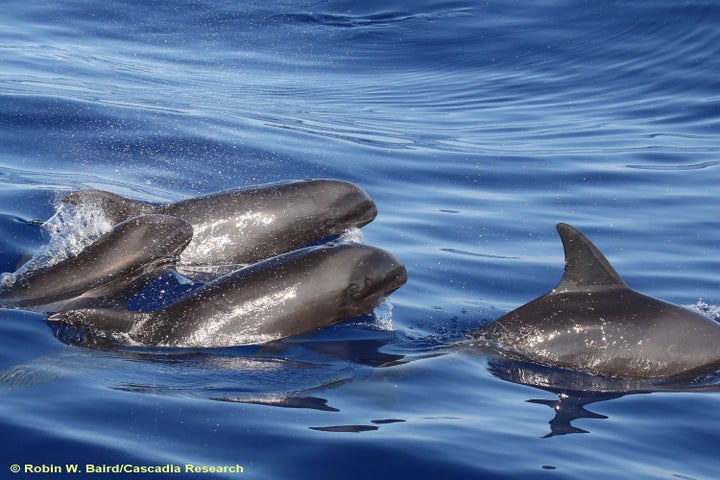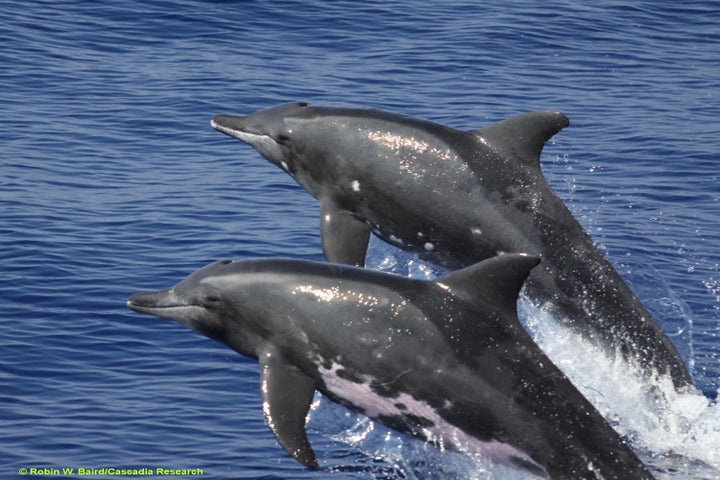Scientists off the coast of Hawaii have discovered a never-before-seen hybrid sea creature ― a cross between a rough-toothed dolphin and a melon-headed whale.
The animal was spotted off the coast of Kauai, Hawaii in August 2017, as detailed in a new report from Cascadia Research Collective and first reported by local newspaper The Garden Island.
But while the discovery is definitely cool, many news reports have jumped the gun a little bit by referring to the creature as a totally “new species.”

“It isn’t and shouldn’t be considered a new species,” Robin Baird, a biologist with the research group, told HuffPost in an email.
The definition of what constitutes a “species” is complicated, and even scientists don’t all agree entirely. But as Quanta Magazine explains, isolated occurrences of individual hybrids aren’t typically considered new species, either because the hybrids cannot reproduce or because lone hybrids are apt to just get reabsorbed into existing species by mating with an animal that’s the same species as one of its parents.
In some cases, hybrids breeding with hybrids can ultimately lead to the formation of distinct new species, but there’s no evidence that’s happening here, according to Baird.
And while many reports have referred to the animal as a whale-dolphin hybrid, it’s worth mentioning that technically, melon-headed whales are part of a scientific family of ocean dolphins called Delphinidae. (Fun fact: Orcas, or killer whales, are also members of Delphinidae.)

Baird told CBS News that scientists were able to get a biopsy sample from the hybrid to confirm its unusual parentage.
“Based on the genetics, the father was a rough-toothed dolphin and the mother a melon-headed whale,” he told the outlet.
There may be similar hybrids out there, he told HuffPost.
“I wouldn’t be surprised if there are more hybrids between the two species ― they do associate quite regularly,” Baird said. The unusual thing about this case, he added, was that scientists only saw one melon-headed whale (not counting the hybrid) spending time with a group of rough-toothed dolphins.

Melon-headed whales, he explains, usually travel together in groups of around 250. He suspects the one melon-headed whale traveling with the rough-toothed dolphin group is likely the hybrid’s mother and has been hanging out with the pod for a while, creating “a greater than normal likelihood of inter-species mating.”
Baird said that discovering hybrids can have “important implications” for the species involved. For one thing, hybrids can occur when the paternal species goes through a population drop and “individuals have difficulty finding mates.” But researchers aren’t sure yet if that’s the cause in this situation.
“We don’t have any information on population trends for either species in Hawaii, so can’t say whether this is the case, but we’ll be looking for evidence of additional hybrids,” he said.
